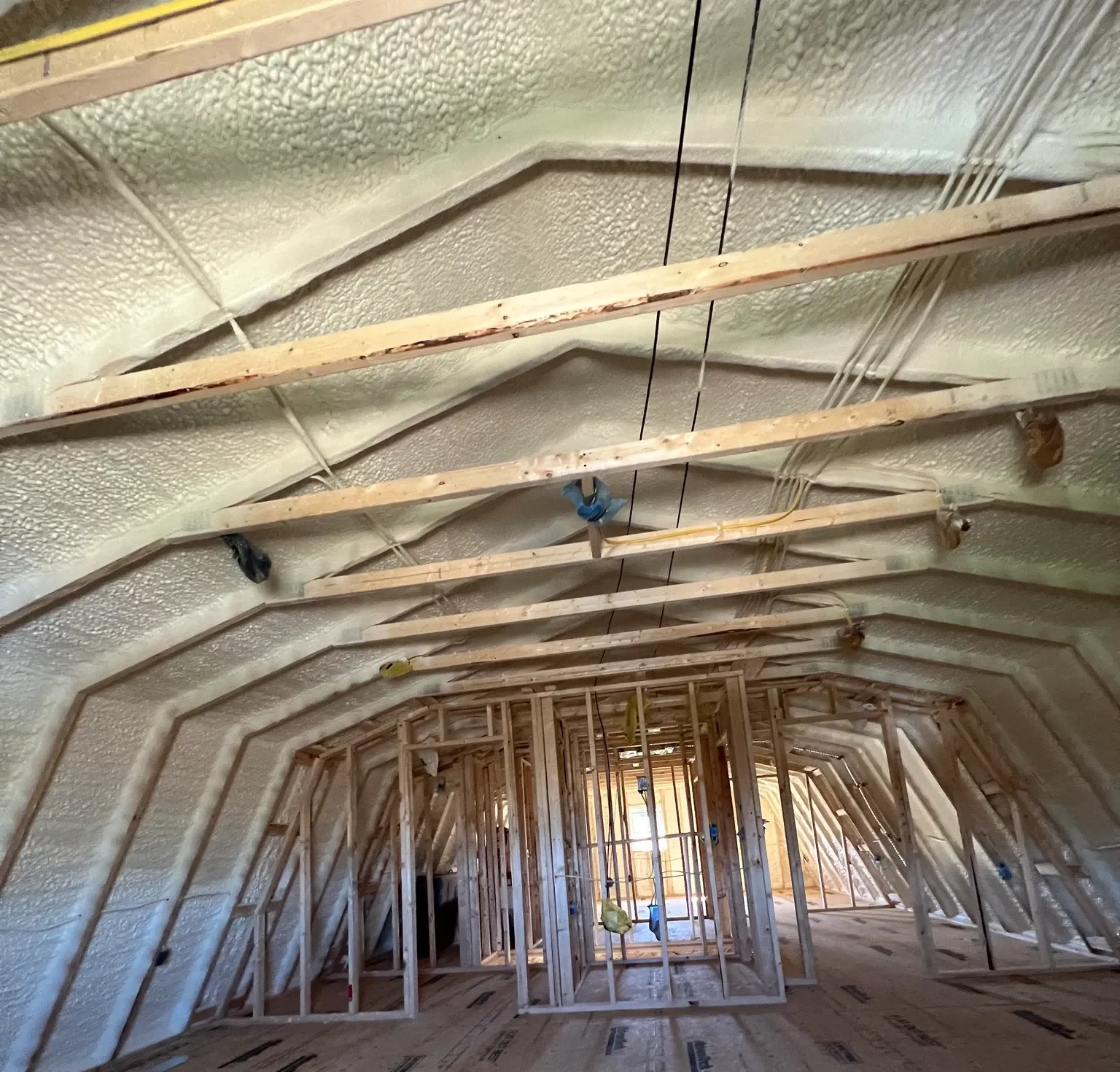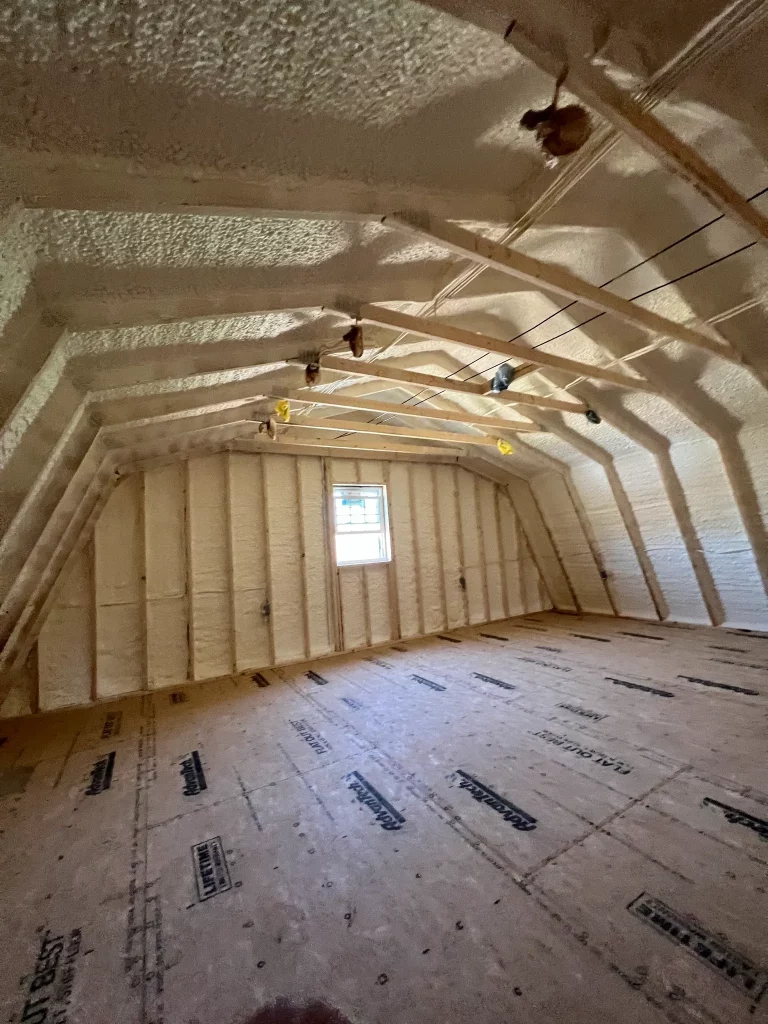
Spray foam insulation acts as a moisture barrier, reducing the amount of humid air that enters Saint Clairsville homes. This directly addresses a regional challenge where summers bring high humidity levels that seep through conventional insulation, contributing to mold, condensation, and structural decay.
Closed-cell spray foam, in particular, creates an airtight seal that resists vapor transfer and moisture accumulation. By minimizing air infiltration and thermal bridging, spray foam maintains stable indoor humidity levels, making the home more comfortable and reducing strain on HVAC systems.
Ohio Valley Spray Foam applies methods shaped by real-world projects across Belmont County and the surrounding Ohio Valley, ensuring solutions are rooted in field-tested performance.
Humidity levels in Eastern Ohio regularly exceed 70% during summer months (Source: NOAA Climate Data, 2024). Older insulation types, such as fiberglass batts, often allow warm, damp air to penetrate walls and attics.
| Insulation Type | Vapor Barrier | Air Seal Quality | R-Value per Inch | Mold Resistance | Longevity |
|---|---|---|---|---|---|
| Closed-Cell Spray Foam | High | Excellent | R-6 to R-7 | High | 20+ Years |
| Open-Cell Spray Foam | Medium | Very Good | R-3.5 to R-4 | Moderate | 20+ Years |
| Fiberglass Batt | Low | Poor | R-2.9 to R-3.8 | Low | ~10 Years |
| Blown-In Fiberglass | Low | Poor | R-2.2 to R-2.7 | Low | ~10 Years |
Bonus Tip: When insulating humid basements or crawl spaces, closed-cell spray foam prevents vapor intrusion and also reinforces structural walls.
Saint Clairsville experiences rapid humidity spikes and temperature swings. The dense structure of closed-cell spray foam limits both air exchange and dew point condensation.
According to the Ohio EPA (2023), homes in counties with clay-heavy soil and limited air flow (such as Belmont County) see a higher incidence of humidity-driven mold problems. Spray foam effectively seals these micro-entry points, especially around sill plates, rim joists, and rooflines.
| Property | Closed-Cell Spray Foam | Open-Cell Spray Foam |
|---|---|---|
| Permeability (Perms) | <1.0 (Low) | 10-15 (High) |
| Water Absorption Rate | <0.5% | Up to 40% |
| Dimensional Stability | Excellent | Good |
| Air Impermeability | Yes | Yes |
| Vapor Retardant Classification | Class II | Not Classified |
Bonus Tip: Pairing spray foam with a dehumidifier helps regulate long-term moisture levels in sealed homes, especially in basements.

Focus on attics, crawl spaces, basements, and rim joist the most common entry points for humid air.
Not in areas prone to vapor pressure or direct moisture contact. Closed cell is better for those zones.
Proper site evaluation includes moisture checks before application. Spray foam should only be applied to dry substrates.
When installed correctly, closed-cell spray foam resists humidity for decades without loss of performance.
Spray foam creates a moisture-resistant shell that helps Saint Clairsville homes remain stable in high-humidity conditions. Closed-cell foam offers superior performance in damp zones, while open-cell foam helps reduce interior humidity fluctuations. Performance depends on proper placement, material choice, and ventilation planning.
Evaluate wall types, ventilation systems, and typical moisture conditions before choosing an insulation strategy.
Ohio Valley Spray Foam provides insulation solutions that address the high humidity common in Saint Clairsville. Reach out to the team by calling (740) 373-3626 or emailing [email protected] to discuss material choices and application strategies.
Use a hygrometer in key areas like attics and basements. Consistent readings above 60% signal the need for ventilation adjustments.
Mold requires organic material and moisture. Foam itself doesn’t support growth, but leaks elsewhere can still introduce risk.
Yes. HVAC loads may decrease, but fresh air systems or dehumidifiers might be needed depending on house tightness.
Yes, but it requires a detailed inspection to avoid sealing in existing moisture or mold.